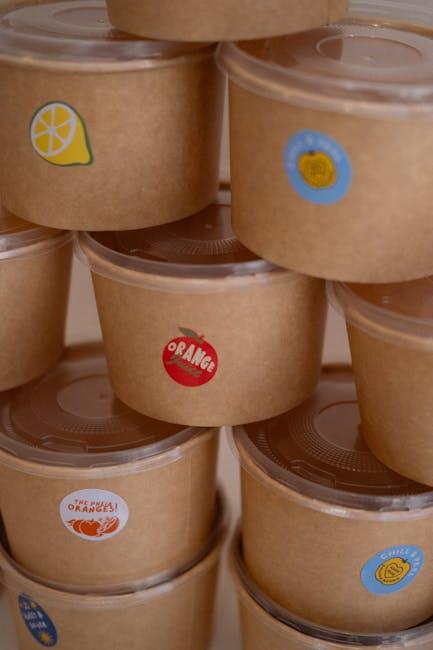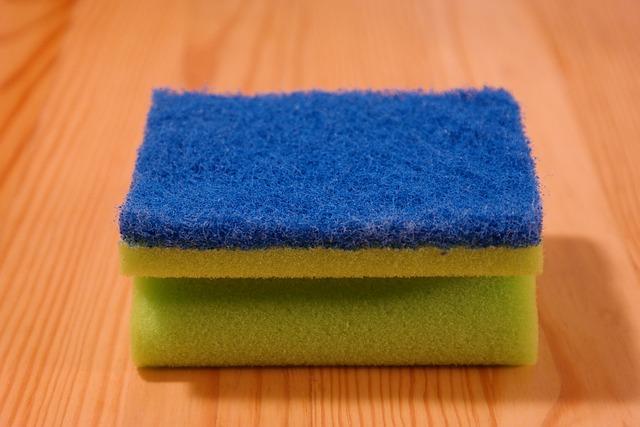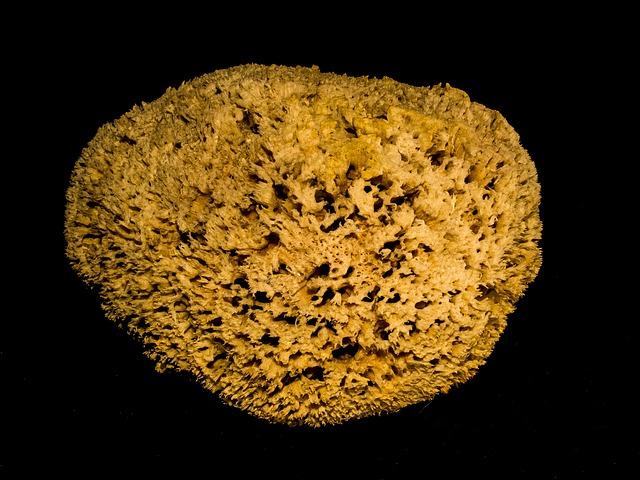In the quest for a more sustainable lifestyle, consumers are increasingly scrutinizing the everyday items that clutter their kitchens. Among these, kitchen sponges—those humble yet indispensable tools for cleaning—are often overlooked in discussions about eco-friendliness. Enter the compostable kitchen sponge: a product designed not only to tackle tough messes but also to minimize environmental impact. As we delve into the world of cleaning solutions,it’s vital to ask: do these innovative sponges truly outperform their customary counterparts? In this article,we will explore the performance,durability,and environmental benefits of compostable kitchen sponges,shedding light on whether they are a worthy replacement for the sponges we’ve relied on for generations. Join us as we scrub away the myths and reveal the facts behind these eco-conscious cleaning alternatives.
Exploring the Eco-Friendly Evolution of Kitchen Cleaning Tools
As the movement toward sustainable living gains momentum, the market for cleaning tools—particularly in the kitchen—has responded with innovative alternatives to conventional products.Compostable kitchen sponges made from natural fibers and plant-based materials offer a refreshing take on cleaning supplies. Unlike traditional sponges, which may take centuries to decompose and often contribute to landfill waste, these eco-friendly options break down within months, enriching the soil rather than polluting it. The materials used, such as cellulose, loofah, and cotton, not only promote biodegradability but also can outperform their synthetic counterparts in terms of absorbency and durability.
When comparing the performance of compostable sponges to traditional sponges, it’s essential to consider several factors that impact the cleaning experience. Below is a simplified comparison of their features:
| Feature | Compostable Sponges | Traditional Sponges |
|---|---|---|
| Material | Natural fibers, plant-based | Polyurethane, synthetic fibers |
| Longevity | 3-4 weeks | Up to 3 months |
| Absorbency | High | Moderate |
| Environment Impact | Biodegradable | Long-lasting waste |
This comparison highlights that while traditional sponges may have a longer lifespan, their environmental cost is meaningful. In contrast, compostable sponges present a compelling option for eco-conscious consumers seeking effective cleaning tools that align with their sustainability values. Not only do they provide satisfactory performance for daily tasks, but they also encourage a shift towards more responsible consumption habits in our kitchens.

Comparative Performance: Compostable Sponges vs. Traditional Sponges
When evaluating the effectiveness of compostable sponges versus traditional sponges, several factors come into play, including cleaning power, durability, and environmental impact. compostable sponges are frequently enough made from natural materials like cellulose or plant fibers, allowing them to excel in biodegradability while still providing effective cleaning. They usually have a softer texture, making them ideal for delicate surfaces while being tough on grime. In contrast,traditional sponges typically consist of synthetic materials that can absorb water but may harbor bacteria over time. Their lifespan can be longer due to their durability, but they contribute substantially to plastic waste, posing a challenge for eco-conscious consumers.
Another vital consideration is maintenance and hygiene. Compostable sponges can be easily cleaned and composted at the end of their life cycle, offering a guilt-free disposal option.On the other hand, traditional sponges require frequent replacement due to odor retention and bacterial growth, often leading to more waste. Below is a comparison of some critical performance metrics between the two types of sponges:
| Feature | Compostable Sponges | Traditional Sponges |
|---|---|---|
| Material | Natural fibers | Synthetic materials |
| Biodegradability | Yes | No |
| Durability | Moderate | High |
| Antimicrobial Properties | Variable | None (bacteria growth possible) |
| Environmental Impact | Low | High |
while traditional sponges may offer superior longevity and durability, compostable sponges shine in terms of environmental duty and are a compelling choice for those seeking sustainable cleaning options.As consumers become more aware of their environmental footprint,the balance of performance versus sustainability will continue to influence their purchasing decisions significantly.

Sustainability in Action: The Benefits of Switching to Compostable Options
Transitioning to compostable kitchen sponges offers a variety of noteworthy advantages that align with a commitment to environmental stewardship. Unlike traditional sponges, which can take hundreds of years to decompose, compostable options are designed to break down naturally, minimizing landfill contributions. This transition not only helps in reducing waste but also supports a circular economy where materials return to the earth as nutrients.
Moreover, compostable sponges are typically made from biodegradable materials such as cellulose, coconut fibers, or other plant-based resources. These sponges often showcase excellent absorbency,making them effective for everyday cleaning tasks. Some additional benefits include:
- reduced Toxicity: Many compostable sponges are free from synthetic chemicals, making them safer for your family and the environment.
- Enhanced Durability: Despite being eco-friendly,these sponges can hold up well against traditional options,providing long-lasting performance.
- Versatility: Suitable for various surfaces, from kitchen counters to delicate dishes, compostable sponges offer a flexible cleaning solution.
| Feature | Compostable Sponges | Traditional Sponges |
|---|---|---|
| Decomposition Time | 3-6 months | 100+ years |
| Toxic Chemicals | None | Possible |
| Absorbency | High | Moderate |

Maximizing Lifespan and Efficiency: Tips for Using Compostable Sponges
To optimize the lifespan and efficiency of compostable sponges, consider the following practices that not only extend their usability but also ensure that you are making the most out of your eco-friendly choice:
- Rinse After use: Immediately rinse your sponge after each use to prevent bacteria buildup and odor formation.
- Dry Properly: Allow sponges to air dry in a well-ventilated space. This helps in preventing the growth of mold and prolongs their lifespan.
- Avoid Harsh chemicals: Steer clear of bleach or strong detergents, as they can degrade the fibers in compostable sponges more quickly than traditional alternatives.
- Pair with a Scrubber: For tougher jobs, consider using a non-abrasive scrubber alongside your sponge to preserve its structure.
It’s also essential to know how to effectively transition your compostable sponge into the composting process. When you’re ready to replace your sponge, chop it into smaller pieces to expedite decomposition.Ensure the composting bin maintains a good balance of green and brown materials to facilitate nutrient-rich compost. Here’s a simple comparison of traditional versus compostable sponges regarding their environmental impact:
| Feature | Traditional Sponge | Compostable Sponge |
|---|---|---|
| Decomposition Time | Years | Weeks to Months |
| Landfill Impact | Contributes to waste | Composts back to Earth |
| Materials | Synthetic | Natural fibers |
In Summary
In a world increasingly focused on sustainability, the choice of kitchen sponges becomes more than just a matter of cleanliness; it enters the realm of environmental responsibility. Compostable kitchen sponges stand at the intersection of innovation and eco-friendliness, offering an appealing option to their traditional counterparts. As we’ve explored, these sponges bring with them unique benefits, including biodegradability and reduced environmental impact, yet they also come with their own set of challenges.While traditional sponges may hold the upper hand in longevity and heavy-duty scrubbing, the urgency for sustainable solutions cannot be overstated. As consumers weigh the effectiveness of compostable options against their conventional peers, it becomes clear that the best sponge for your kitchen may hinge not just on performance but on your personal commitment to the planet.
So, as you make your next purchase, consider what kind of impact you want your cleaning tools to have. Whether you opt for the tried-and-true traditional sponge or embrace the earth-friendly promise of compostables, remember that every small choice adds up in the greater tapestry of our shared ecological future. both alternatives have their place in our homes; it’s up to us to decide which aligns best with our values and lifestyle.

